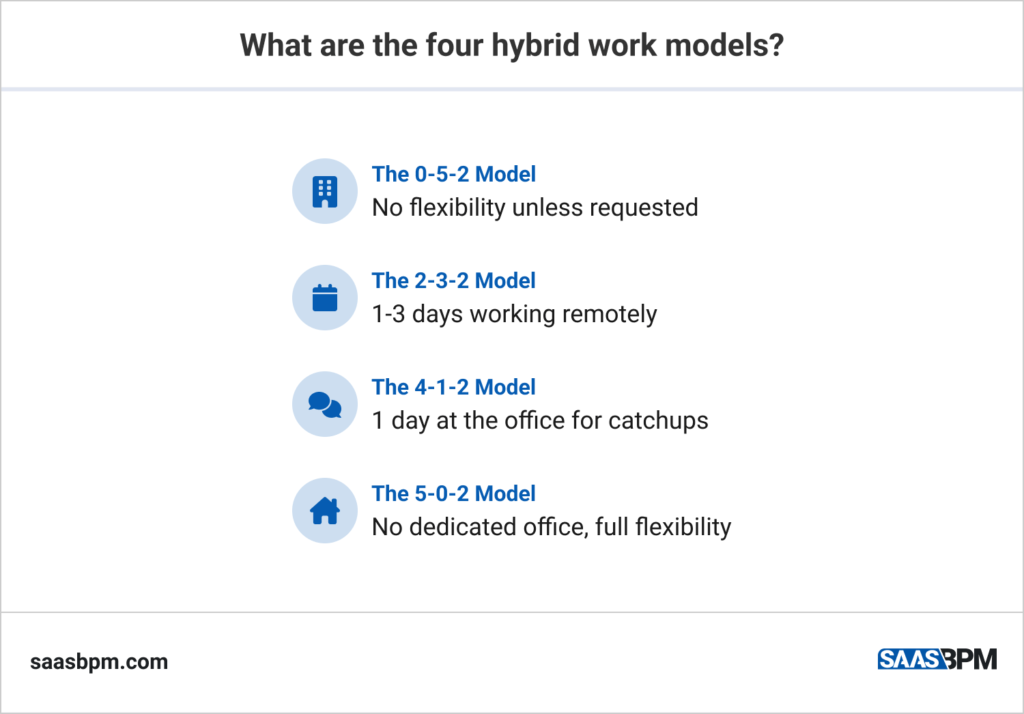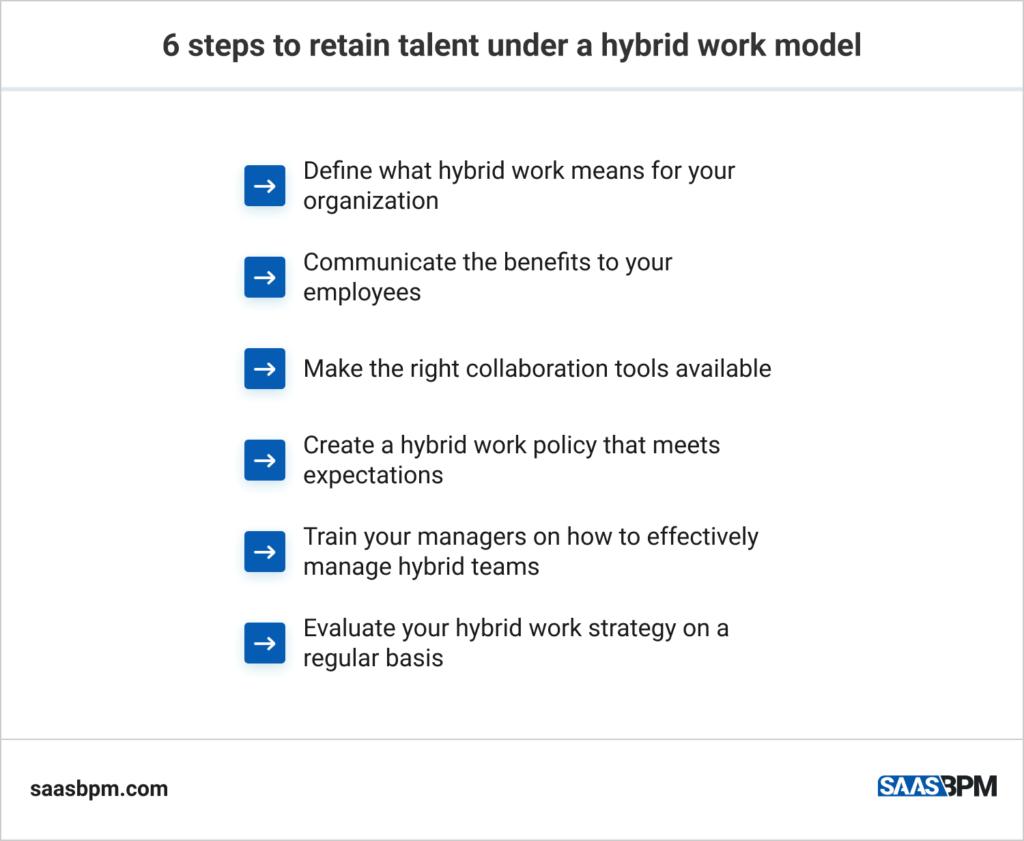Working from home came to exist when the pandemic struck the world and forced many businesses to convert to remote or hybrid work models. As soon as the restrictions started to ease, employers have been trying to get their employees back on track, in the office.
However, many organizations have realized that maybe this work-from-home setup isn’t so bad after all and are now offering a mix of remote and in-office work. This improves employee satisfaction as it gives them the best of both worlds- they can enjoy the comfort of their homes while also having the option to go into the office when necessary.
So, are hybrid models the key to retaining top talent? Small business owners are always looking for new and innovative ways to keep their best employees. However, with a tight budget and limited resources, it can be tough to find the right solution. Here are four hybrid models that will help you keep your best employees while staying within your budget.
Four Hybrid Work Models And How To Use Them Effectively

The structure of systems and norms that regulate how, when, and where individuals work on a business team is known as a hybrid work model. It covers rules regarding work location, scheduling flexibility, and the use of digital tools to manage work.
Hybrid work models combine a variety of components to enable your employees to operate in their most efficient environment. This is done by replacing office-related expenditures and lost energy (from commuting) with digital technologies and scheduling choices that enhance employee performance, mental and physical health, and quality of life.
1. The 2-3-2 Model
Under this model, employees work from home for 1-3 days and come into the office for two days. The office is still the company’s core, but employees can now work from home a few days each week using digital technology. This might be implemented across the board or left to teams to decide.
With this hybrid work model, an office is a place for building strategies, organizational discussions, and project distribution rather than a place for individual focus-mode work.
The main advantage of this model is that it gives employees the freedom to manage their time in the best way for them, while also having the chance to get out of the house and interact with their colleagues during the week.
2. The 0-5-2 Model
Among all hybrid work models, this one has the least flexibility. It resembles the work setup that was the norm before 2020. The physical office here is at the heart of the business, where all important conversations occur. Aside from being the main spot where everyone gathers and creates culture, praise is offered as well as productivity.
With this model, employees are typically expected to attend the office each day. Working from home is limited, and business trips or sick days are exceptions. Also, most people need to take responsibility for what they miss from not being at the office. When they are back, they have to “catch up” with their teammates.
3. The 4-1-2 Model
Under this model, employees work from home for four days and come into the office for one day, usually on a Monday or for client/ team meetings.
This model is a good option for employees who want to spend more time with their families or pursue hobbies outside of work. It also allows them to get out of the house and interact with their colleagues on a regular basis.
4. The 5-0-2 Model

With this hybrid work model, employees work entirely from home, with no fixed workplace. Businesses with such a setup are usually without a permanent physical headquarters or a dedicated office for their team. The office nucleus is entirely digital. When necessary, firms would hire space or use co-working spaces on an as-needed basis. The entire team may congregate once a month or even less frequently.
This model is perfect for employees who need a lot of time to focus on their work without distractions. It also allows them to get out of the house and interact with their colleagues on a regular basis.
How To Approach Hybrid Work To Retain Talent?
The workforce is changing, and organizations are struggling to keep up. In order to retain top talent, they need to change the way they think about work. The traditional 9-to-5 job is no longer the only option for many workers. With the rise of telecommuting and other flexible work arrangements, more and more employees are looking for ways to integrate their work and personal lives.

In order to make hybrid work models worth it, businesses need to invest in digital technologies that enable employees to work from home effectively. Such a solution is our very own business process management software SaaS BPM. It makes all tasks your team members are working on transparent so it is easier to spot who the top performers are, and where improvement is necessary.
Mind you, employers still need to schedule time for employee interaction in order to build culture and maintain communication. Constant coordination and team-building initiatives are key for employee retention.
The advantages of a hybrid work model include increased enthusiasm levels, employee productivity and quality of life, as well as reduced burnout and depression. With the right approach, businesses can retain talent and thrive despite economic and political challenges.
Final Thoughts
In order to keep up with the ever-changing demands of top talent, organizations are turning to hybrid work models that give employees more flexibility. By allowing workers to have some say in how and when they work, you can show them that you value their time and skills. If you’re looking for a way to offer this type of flexibility without sacrificing productivity, SaaS BPM is your go-to solution. With our help, you can easily create a custom hybrid work model that meets the needs of both your team and your bottom line.

